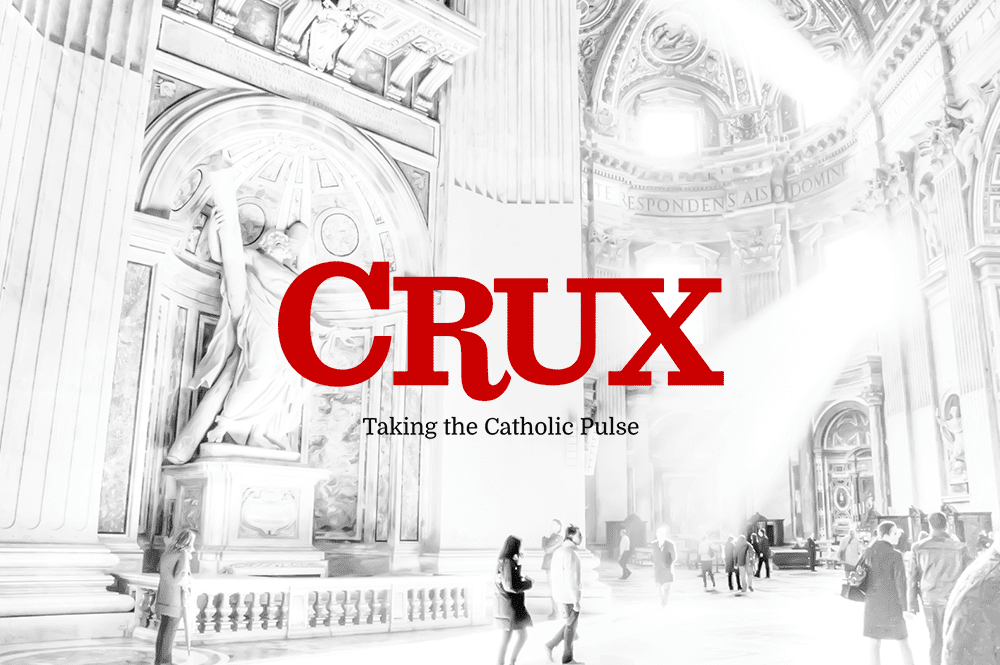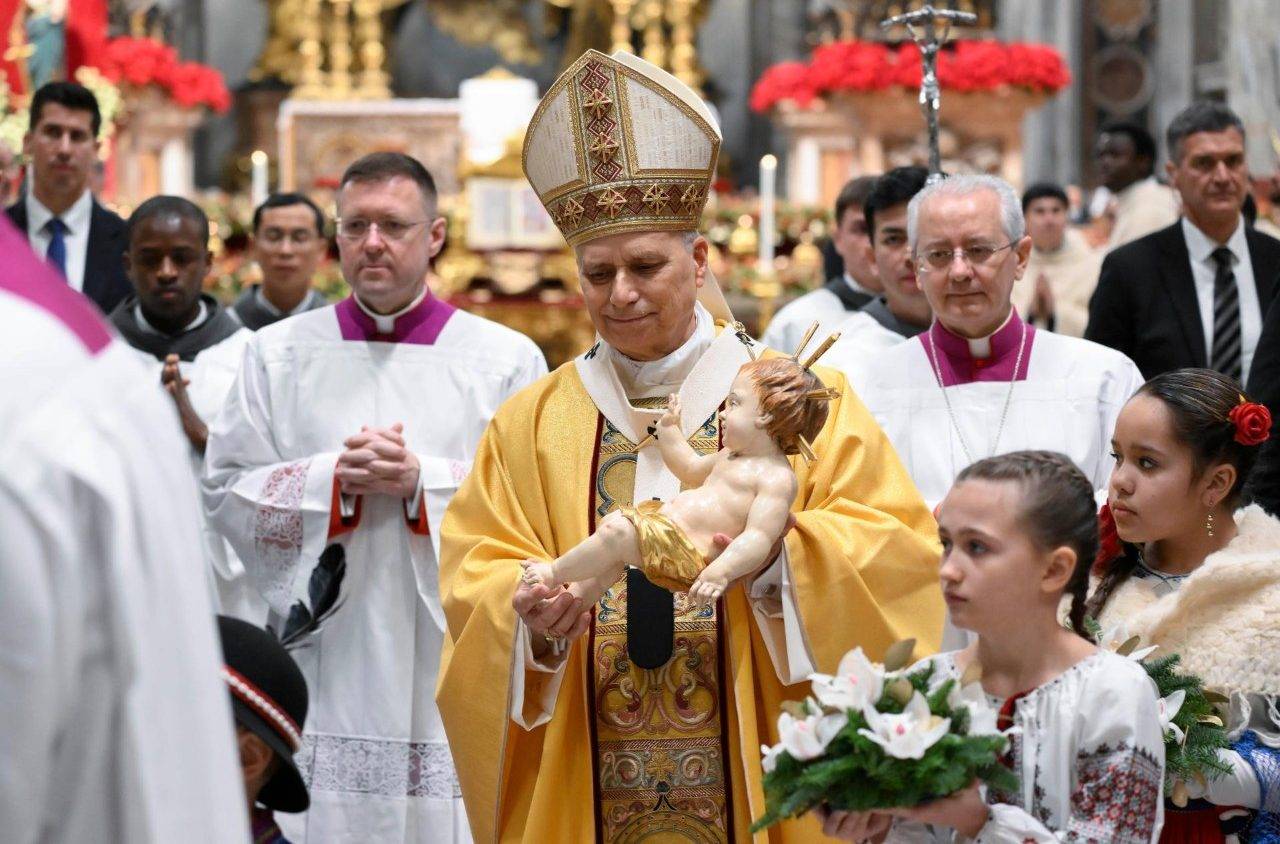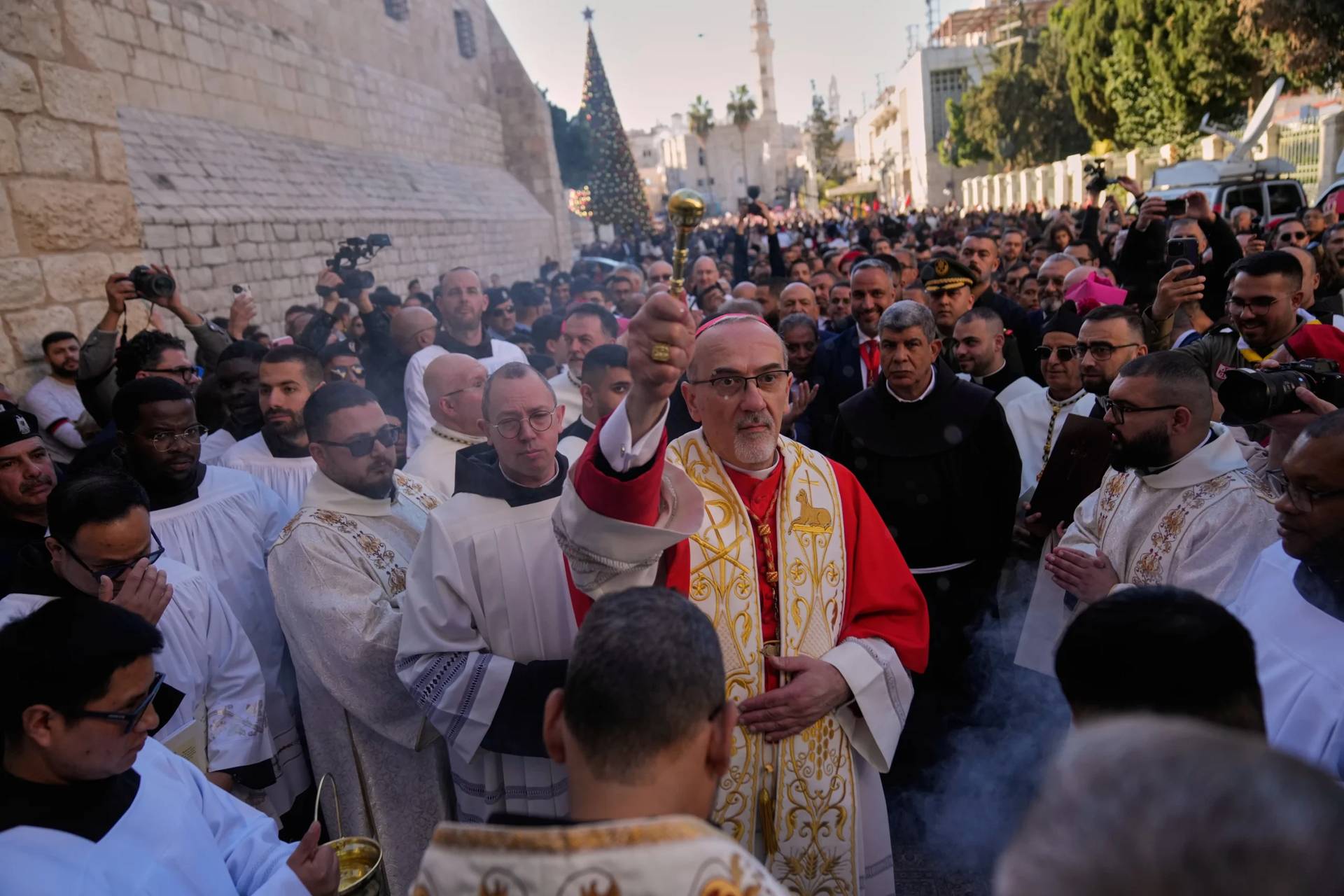NEW YORK — 2020 in the United States, like the rest of the world, will always be synonymous with the coronavirus pandemic. It’s taken over 330,000 American lives to date, put millions out of work and single-handedly changed the way society lives and communicates.
That is, however, only one chapter in the story of the American Catholic Church in 2020.
Here’s a look at 2020 for the American Catholic Church through the pandemic, election of Joe Biden as the second Catholic president, and the unprecedented report from the Holy See on laicized ex-cardinal Theodore McCarrick’s rise through the American episcopacy.
Coronavirus
The coronavirus pandemic forced churches to embrace technology and find a way for Catholics to worship from afar. Parishes invested in video equipment to broadcast mass over Zoom, Facebook Live and YouTube. Bishops nationwide also suspended the obligation to attend Sunday Mass to keep people safe at home.
For those reasons, questions surrounding the government’s authority to mandate closure of places of worship were relatively mute most of the year. The dioceses were making that decision themselves to keep people safe.
But when a second wave struck in October a battle of Church vs. State was born. Many dioceses at that point felt they had a grasp on effective protocols, and thought new restrictions imposed by mayors and governors took it too far.
On October 8, The Diocese of Brooklyn filed a lawsuit seeking an injunction against new restrictions by Governor Andrew Cuomo to limit capacity at diocesan churches.
“Our churches have the capacity to accommodate many worshippers and to reset our attendance capacity to 10 people maximum in the red zone, 25 people in the orange zone, when we have had no significant cases, impedes our right to worship and cannot stand,” said Bishop Nicholas DiMarzio of Brooklyn in a statement.
After the Court of Appeals denied the request for an injunction, the Supreme Court on Nov. 25 ruled that restrictions on attendance at religious services violates the First Amendment and issued the emergency injunction.
A domino effect ensued. The Supreme Court has since ruled in favor of the diocese in similar cases in California, Colorado and New jersey.
On Dec. 22, the Archdiocese of Washington – which filed its lawsuit on Dec. 11 against the city’s 50-person limit at houses of worship – also won its lawsuit. As a result, the capacity limit was expanded to 250 people or 25 percent capacity, whichever is smaller.
These decisions have set a precedent that the Supreme Court will uphold the First Amendment right to worship – seen as a victory for religious freedom nationwide.
Like churches, Catholic schools had to create the infrastructure to shift online, but their independence from state departments of education have allowed many to stay open. So far, their smaller size – combined with masks, social distancing and other safety protocols – have kept coronavirus numbers in the school’s low.
But that hasn’t reversed the financial devastation many Catholic schools are facing. In 2020, they closed at the highest rate since the tail end of the financial crisis in 2009-2010.
As of late November, 147 Catholic schools announced closure at the end of the school year and 26 others will consolidate or merge, according to National Catholic Education Association data. In a conversation with Crux, John Schoenig, senior director of teacher formation and education policy at the University of Notre Dame, said the pandemic exacerbated pre-existing hardships some Catholic schools faced long before the pandemic.
“The strong will get strong. The weaker will be even more vulnerable. For a number of Catholic schools already in financial peril this served to accelerate that peril or fragility,” he said.
Election 2020
On Saturday, Nov. 7 it was reported that Joe Biden would capture enough electoral college votes to win the 2020 presidential election and make history as just the second Catholic commander-in-chief in United States history.
As that happened, reactions from American Catholics reflected divisions in the country that will exist long after Biden takes over 1600 Pennsylvania Ave. on January 20.
Biden’s Catholic supporters believe he will bring the country back together after the turbulent presidency of Donald Trump. They also note his stances on chief Catholic issues like equality, the environment, immigration, international relations and capital punishment as positives.
Biden’s detractors worry his pro-choice stances make it inevitable abortion rights will expand. They also question what his election means for religious freedom. Trump earned praise from Catholics on both religious freedom and pro-life issues throughout his presidency. He was the first president to attend the annual March for Life in Washington D.C.
Biden’s Catholic faith and beliefs – not all of which align with Church teaching – have led to a mixed response from Catholic leaders.
About a week after the election, Pope Francis called Biden to congratulate him and discuss working together on issues like equality, climate change and immigration.
Meanwhile, in an unscheduled five-minute address to close out this year’s virtual U.S. bishops’ conference, the body’s president – Archbishop José Gomez of Los Angeles – took aim at the president-elect over his support for abortion rights.
“When politicians who profess the Catholic faith support (abortion rights) there are additional problems. One of the things it creates is confusion with the faithful about what the church actually teaches,” Gomez said.
He also announced Archbishop Allen Vigneron of Detroit will chair a new working group to help navigate the situation between the American Catholic church and president-elect.
McCarrick Report
On Nov. 10, the Vatican released its long-awaited, unprecedented 449-page report on how laicized ex-cardinal Theodore McCarrick rose through the ranks of the church despite decades-long accusations of sexual misconduct and abuse.
It spans the years 1930-2017, detailing who knew what and when regarding McCarrick’s sexual harassment and abuse of minors and seminarians going back to the early 1970’s.
In the aftermath of the report prominent leaders of the Catholic Church in America pointed to a “culture of clericalism” that allowed him to rise through the ranks.
Cardinal Timothy Dolan, archbishop of New York, called it a “tragic atmosphere” that existed on his radio show on the Catholic Channel, Sirius XM 129.
“The real villain here, there’s only one. That’s Ted McCarrick,” Dolan said to Father Dave Dwyer on Conversation with Cardinal Dolan. “The second villain here is, I’m afraid we have to say, a climate that held priests above the law, that gave priests special privileges, that said you need to be accountable to no one and we call that the sin of clericalism.”
Many other bishops lamented the culture and talked about a greater need for accountability and transparency going forward. Both clerics and lay people have also talked about the need to focus on the victim-survivors.
“We need to take anonymous accusations seriously into account: put the victims first of all, and care for them and be motivated by that first of all,” Cardinal Blase Cupich, archbishop of Chicago, told Crux. “I’ve always said that with regards to this whole issue: put the child in the middle of a room and make them the focus and pay attention and the facts will fall into place.”
Juan Carlos Cruz, a clergy sex abuse survivor from Chile, said the church needs to focus on the survivors rather than the episcopacy itself to see actual change.
“The men and women survivors need to be the center of our topics,” Cruz said at a Georgetown Initiative on Catholic Social Thought and Public Life discussion earlier this month. “The suffering and the horror that is still going for so many people in our church is real and it’s now and we need to address it immediately.”
Others, like Bishop Shawn McKnight of Jefferson City said it’s important to involve lay people in addressing situations like McCarrick to give people confidence
“that there will be a process in place that when an accusation comes forward it will be treated with the seriousness it deserves,” he said.
John Carr, director of the Georgetown initiative, took it a step further at the discussion earlier this month. He called for lay people’s involvement in the process of choosing a bishop.
“If victims were in the room, if survivors were in the room there would be different decisions. At every level, we need to find a way to open up these processes,” Carr said.
Follow John Lavenburg on Twitter: @johnlavenburg

















